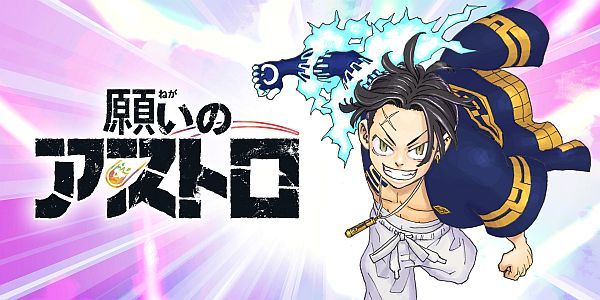“The first place I submitted a manga to was Shonen Jump. I want to brag to the me back then, saying that I’m a Jump challenger now!” – Ken Wakui
Even though I’m in my ‘40s, I still love Shonen Jump stuff. I grew up on Dragon Ball. From Naruto to Demon Slayer to My Hero Academia to whatever’s next, I’ve been there and will continue to see what Jump does. I remember once upon a time where the future of Shonen Jump was somewhat in question before My Hero Academia blew up.
Yet lately and especially after My Hero Academia and Jujutsu Kaisen ended, I’ve been thinking about fans who grow up via Shonen Jump series and wanting to be a part of the phenomenon. What if they want to be mangaka for the same magazine that drove their youth?
But what if those same folks got rejected? What if they learned that Shonen Jump isn’t the be-it end-all of manga?
The best example of a Shonen Jump rejected mangaka is Hajime Isayama of Attack on Titan. Once told by Shueisha editorial to change things to his story and art in his submission for Attack on Titan, Isayama went to Kodansha Publishing instead. And you can say the rest was history.
Now we have another 2nd example in Ken Wakui, whose hit manga, Tokyo Revengers, became a global phenomenon. He tried to get a manga into Shonen Jump a long time ago, but was rejected. Wakui said that editorial told him to draw his story elsewhere where they would appreciate his interests. Wakui would go on to Kodansha and start off with Shinjuku Swan before creating Tokyo Revengers. He’s currently back on Shonen Jump with Astro Royale, which is a story about a young heir to a yakuza family trying to help the world after a meteor hit the planet and gave a lot of people superpowers.
One can argue that Wakui went from, in the theme of WWE Superstar Cody Rhodes, undesirable to undeniable. Astro Royale has only been around since April 2024, but it’s clear that Wakui intends to be a main-stay in Jump. He sounded like he always wanted to be a part of Shonen Jump.
And now I think about fans turned artists who aspire to draw for Shonen Jump. Over the summer, I’ve noticed how many artists tried to pitch manga ideas to manga industry professionals at U.S. anime conventions. Viz Media has taken notice of this demand and started a program for one-shot manga for future manga artists. Yet I sometimes wonder how many of them know what it actually takes to make it to Jump.
And I think about this statement from Takehiko Inoue in an interview alongside Akira Toriyama spotlighting 50 years of Shonen Jump in 2018.
Then I see threads like this one on Reddit about whether it’s okay to apply for Shonen Jump after having experience on other platforms like Webtoons.
It sounds like things haven’t changed. Some people still find so much value in the Jump brand.
That’s why I want to say that it’s okay to draw for other publishers and outlets (especially for Japanese creators). The thing is about people who follow Jump (especially here in the West) can be a bit insular with their manga tastes. You get an exciting breadth of manga, but it’s not the full picture. There’s also exposure to some of the nasty aspects of shonen fandom like leak/spoiler culture. Another thing is that fans love to compare shonen titles (past and present) quite a lot. Some are still obsessed with a “Big 3” ideal that isn’t highly relevant anymore.
Sure, there’s a lot of fame and attention with being associated with Jump. But creators have to deal with the vicious weekly ranking system where deserving stories sometimes get the axe out of nowhere. There’s also the problem of trying to end the story the way you want and not being able to because popularity has a curse in where certain plots get throw aside and the main plot gets drawn out longer than it should. I sometimes argue that Shueisha series focus a bit too much on style over substance at times.
That’s why I appreciate the American Manga Awards. The staff behind the ceremony have done a great job in acknowledging manga from all genres and publishers (not just Viz Media’s Shonen Jump). Mangaka have shown appreciation in knowing that they’re being recognized by folks who know the manga world is more than just Jump. Shonen Jump may have started it all for many of us and provided value in our lives. One can use that value in a way to help promote non-Jump and other non-mainstream stories that are worthy of recognition.
The beauty of manga, whether it’s the creator side or the fan side, is that there’s something for everyone of all kinds of backgrounds. That should be the grand goal to promote when it comes to making manga and showcasing its rich diverseness. Manga comes from all kinds of notable places, not just the brand names.

